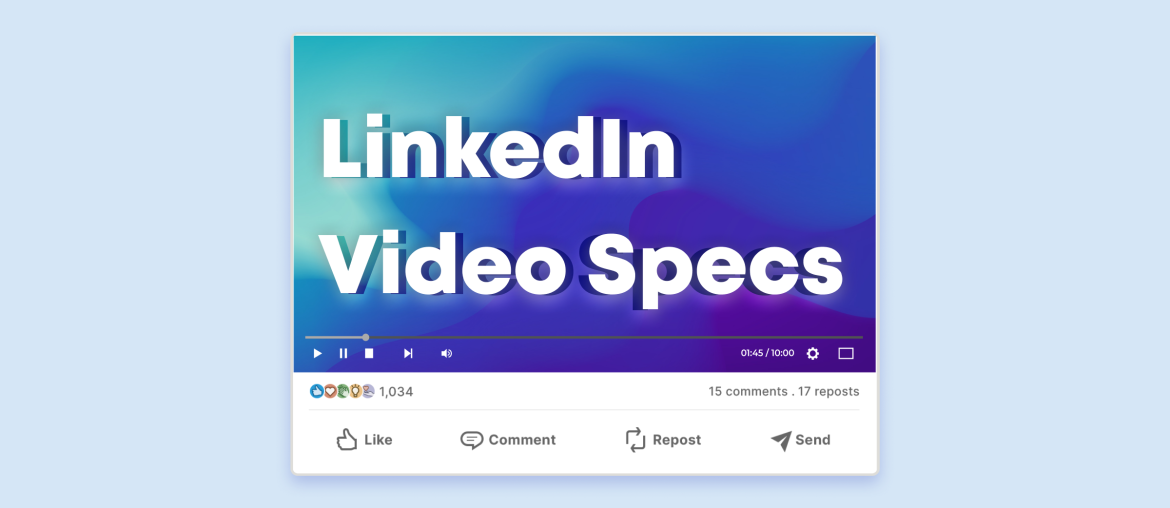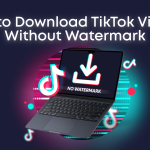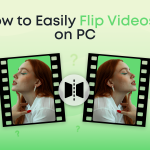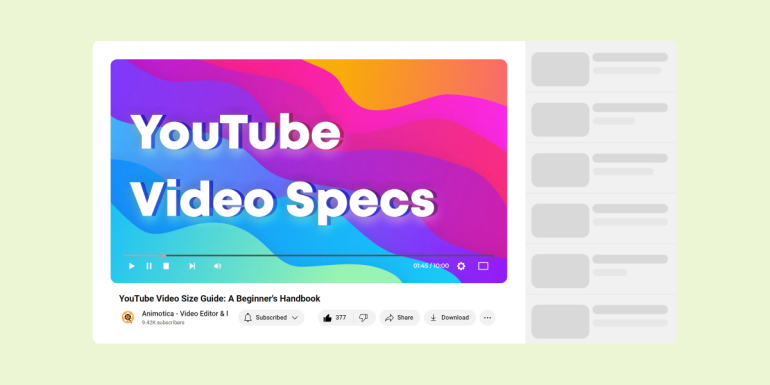LinkedIn has become a powerhouse for professional networking, and video content is now an essential tool for standing out in the crowd. Whether you’re a content creator, marketer, or business owner, understanding how to optimize your videos for LinkedIn can significantly boost your reach and engagement. This guide is here to help you navigate LinkedIn’s video specifications and best practices with ease.
This guide covers everything you need to know about creating effective LinkedIn videos:
- Learn about the latest video specs: formats, resolutions, bitrates, and frame rates.
- Get tips on captions, thumbnails, and optimal video lengths.
- Understand native, ad, and live LinkedIn videos and their strategic uses.
- Explore best practices to optimize for LinkedIn’s algorithm.
By understanding these key elements, you can create LinkedIn videos that not only look great but also drive meaningful engagement and results
Ready to dive in? Let’s explore everything you need to know to master LinkedIn video content!
Contents
Why You Need to be Using Video on LinkedIn
Video content is a cornerstone in digital marketing, and its significance on LinkedIn is immense. With over 1 billion users, LinkedIn is a prime platform for reaching a professional audience. According to LinkedIn, video content is five times more likely to start a conversation than other content types, making it essential for engagement.

Why use video on LinkedIn?
- Engagement: Videos are five times more likely to initiate a conversation.
- Brand Humanization: Videos can humanize your brand on Company pages or personal profiles.
- Storytelling: Showcase your company’s values and employee stories.
- Educational Value: Videos can educate, inform, or entertain more effectively.
Reach high-level decision-makers:
- Target Audience: Executives and professionals frequent LinkedIn, and videos capture their attention.
- Opportunities: Facilitates networking, lead generation, and business inquiries.
Algorithmic benefits:
- Native Video Advantage: LinkedIn’s algorithm favors native video content.
- Increased Visibility: Native videos are more likely to appear in feeds.
With the right strategy, you can:
- Enhance Brand Recognition: Boost visibility and awareness.
- Generate Quality Leads: Attract potential clients and partners.
- Establish Thought Leadership: Position yourself as an industry leader.
Integrating video into your LinkedIn strategy can significantly benefit brand awareness, engagement metrics, and business objectives. Videos help build relationships and drive impact.
Understanding Types of LinkedIn Videos
LinkedIn offers several types of video formats, each suited for different purposes and engagement strategies. Understanding these types can help you choose the right format for your content and audience.
- Native Videos: Native videos are directly uploaded to LinkedIn rather than shared from platforms like YouTube. Autoplay in the feed enhances visibility and engagement, making them perfect for updates, insights, or showcasing company culture. LinkedIn’s preference for native content often results in better reach and higher engagement rates.

- Video Ads: Video ads are paid promotional videos appearing in users’ feeds and sidebar. They target specific demographics like job titles and industries, promote special offers, drive lead generation, or increase brand awareness. Ensure your content aligns with campaign goals and audience interests for maximum effectiveness.

- Live Videos: Live videos let you broadcast in real-time to your professional network, encouraging immediate interaction through comments and reactions. Use them for webinars, Q&A sessions, or product launches. Plan and promote your live videos in advance to maximize engagement.

Each type of LinkedIn video serves a unique purpose and offers different advantages. By understanding these distinctions, you can more effectively utilize video content to meet your marketing and engagement objectives on LinkedIn.
LinkedIn Video Size Guide: All You Need to Know
Mastering the technical aspects of LinkedIn videos is crucial for ensuring your content not only looks professional but also performs effectively on the platform. We’ll break down the essential specifications you need to know, from video formats and dimensions to optimal bitrate and frame rate. Let’s get your videos ready for prime time on LinkedIn!
LinkedIn Video Specs: Video Length and File Size
When uploading videos to LinkedIn, it is essential to be aware of the file size and duration limitations to ensure smooth and successful uploads. Here’s what you need to know:

- Minimum File Size: Even the smallest videos, with a minimum file size of 75 KB, can be shared on the platform. This range ensures that various types of content, from short clips to more comprehensive presentations, can be accommodated without any issues.
- Maximum File Size: LinkedIn allows video uploads up to 5 GB, making it quite flexible for high-quality and longer content.
Regarding video duration, here are the details:
- Minimum Duration: Videos can be as short as 3 seconds, perfect for brief updates or quick highlights.
- Maximum Duration: Videos can be up to 10 minutes long, allowing for in-depth tutorials, interviews, and more comprehensive content.
While this broad range allows for great versatility in the type of content you can upload, remember that:
- Viewer Retention: Shorter videos often perform better in terms of viewer retention and engagement. Thus, even though you have the flexibility to upload longer videos, it’s often beneficial to keep your content concise and to the point.
By adhering to these specifications, you can ensure that your videos are not only compliant with LinkedIn’s guidelines but also optimized for the best viewer experience. Properly formatted and engaging videos can significantly boost your reach and impact on the platform, positioning your content in front of the right audience at the right time.
LinkedIn Video Specs: Resolution and Aspect Ratio
The resolution of your video is key to its clarity and quality. Here’s a quick guide on LinkedIn supported resolutions:

- Minimum Resolution: 240×144 pixels
- Recommended Resolution: 1080×1920 pixels (Full HD)
- Maximum Resolution: 4096×2160 pixels (4K)
Tip: Ensure your video maintains at least 720p resolution to avoid pixelation and poor playback quality. Higher resolutions like 1080p or even 4K provide a crisper, more professional look, but they also come with larger file sizes.
Understanding the aspect ratios is equally important. LinkedIn supports three primary aspect ratios:

- Widescreen (16:9): This is ideal for most types of content and provides the widest view.
- Square (1:1): Great for mobile viewers, offering a balanced view on both desktops and mobile devices.
- Smartphones (9:16): Best for mobile-first videos and Stories, utilizing the full-screen real estate on smartphones.
Selecting the right resolution and aspect ratio ensures your content is displayed correctly and engagingly, whether it’s viewed on a desktop or a mobile device.
LinkedIn Video Specs: Bitrate and Frame Rate
To ensure your videos on LinkedIn look professional and play smoothly, understanding bitrate and frame rate is crucial:

- Bitrate: This is the amount of data processed per second in your video, and it directly affects the quality. LinkedIn supports bitrate from 1 to 30 MBPS. For standard-definition content on LinkedIn, aim for a bitrate between 1 and 6 megabits per second (MBPS). For high-definition videos, especially for ads, target a bitrate between 10 and 20 MBPS.
Example: For a full HD video (1920×1080 pixels), a good bitrate would be around 8 MBPS, balancing quality and file size for smooth playback on various devices.
Visit our comprehensive guide for a deeper understanding of video bitrate and its importance,

- Frame Rate: This determines how smooth your video appears and is measured in frames per second (FPS). LinkedIn supports frame rates from 10 to 60 FPS, but 30 FPS is recommended for most content, especially ads. If your video includes lots of fast motion, using a higher frame rate, like 60 FPS, can ensure it plays smoothly.
Example: For a video showcasing a busy office or fast-paced event, filming at 60 FPS would capture every detail crisply, enhancing the viewer’s experience.
By adhering to these bitrate and frame rate guidelines, you can significantly enhance the visual quality and performance of your LinkedIn videos. Paying attention to these details not only elevates your content but also ensures a seamless viewing experience, keeping your audience engaged and impressed.
LinkedIn Video Specs: Supported Formats and Codecs
When uploading videos to LinkedIn, ensuring you’re using a compatible file type is crucial for seamless playback and user experience. Below is a detailed list of supported video file formats on LinkedIn:
- MP4: MPEG-4 Part 14, a digital multimedia container format standard.
- MOV: Apple QuickTime Movie, a multimedia format developed by Apple.
- M4V: A video container format developed by Apple, similar to MP4.
- MPG: A standard for video and audio compression.
Note: LinkedIn no longer supports the following video formats:
- AVI: Audio Video Interleave, an older format with less efficient compression.
- QuickTime: A multimedia framework developed by Apple, often saved with the .mov file extension.
- MOV: A QuickTime movie file format, also developed by Apple.
Selecting the correct file type ensures your video content uploads smoothly and is viewable by your intended audience without technical issues. For the best results, it’s recommended to use the MP4 format due to its high compatibility and quality retention.
LinkedIn Ad Video Specs
When creating LinkedIn video ads, adhering to the platform’s specifications ensures your content looks professional and performs optimally. Here’s what you need to know:
- File Format: MP4 is preferred for video ads.
- File Size: Max 200MB; aim smaller for faster loading.
- Video Length: 3 seconds to 30 minutes, ideal under a minute.
- Resolution: At least 1080 x 1080 pixels; supports up to 1920 x 1080.
- Aspect Ratio: 1:1 for square, 16:9 for horizontal videos.
- Bitrate: Around 30 Mbps for 1080p; balance quality and size.
- Frame Rate: Supports up to 60 fps, usually 30 fps is enough.
- Thumbnail: JPG or PNG, max 2MB, match the video’s resolution and aspect ratio.
- Captions: Enhance accessibility and engagement.
- Intro Text: Up to 150 characters; make it enticing.
- Headline: Up to 70 characters; clear and relevant.
- Landing Page URL: No more than 200 characters.
By following these specifications, you can create LinkedIn video ads that are visually appealing, quick to load, and engage your target audience effectively. Remember, the key to a successful ad is not just in the technical specifications but also in presenting a compelling message that resonates with your audience.
Best Practices to Optimize Videos for LinkedIn
Optimizing your videos for LinkedIn involves a combination of technical know-how and strategic content creation. Let’s get into some essential tips to make the most of your LinkedIn video content.
- Keep Your Videos Short and Engaging: Attention spans are short on social media. Aim for videos under two minutes to keep your audience engaged. For ads, 15-30 seconds works best.
- Use Captions and Subtitles: Many users browse LinkedIn with the sound off. Including captions or subtitles ensures your message gets across, boosting accessibility and engagement.
- Craft Compelling Thumbnails: Thumbnails are the first visual cue. Select a high-quality image that entices viewers to click. Text overlays and contrasting colors can make your thumbnail stand out.
- Hook Your Audience Quickly: The first few seconds of your video are crucial. Start with a strong hook to grab attention.
- Include a Clear Call to Action (CTA): What do you want your audience to do next? Ensure your CTA is clear and easy to follow.
- Optimize for Mobile Viewing: A significant portion of LinkedIn users access the platform via mobile. Use vertical or square formats and make text large enough to read on smaller screens.
- Leverage LinkedIn’s Native Features: Use LinkedIn’s native video uploader instead of linking to external sites. Native videos tend to have better reach and engagement.
- Analyze and Iterate: Pay attention to video performance analytics. Metrics like views, engagement rates, and audience retention provide insights to improve future content.
These best practices will enhance your video content’s effectiveness on LinkedIn, helping you engage your target audience more efficiently.
What is the best video editor for LinkedIn?
For an easy and efficient video editing experience tailored to LinkedIn, Animotica stands out as a top choice. Here’s why you should consider using it:
- User-Friendly Interface: Animotica is designed with simplicity in mind, making it accessible even for beginners.
- Comprehensive Editing Tools: From trimming and cutting a video to adding text, voiceover, and transitions, Animotica offers all the essential tools you need.
- Optimized for LinkedIn: The app allows you to easily adjust video specifications to match LinkedIn’s requirements, ensuring optimal playback quality.
- Affordable Pricing: Many of Animotica’s features are available for free, and the premium version is highly affordable.
- Direct Export Options: Effortlessly export your final video in the ideal format for LinkedIn without any hassle.
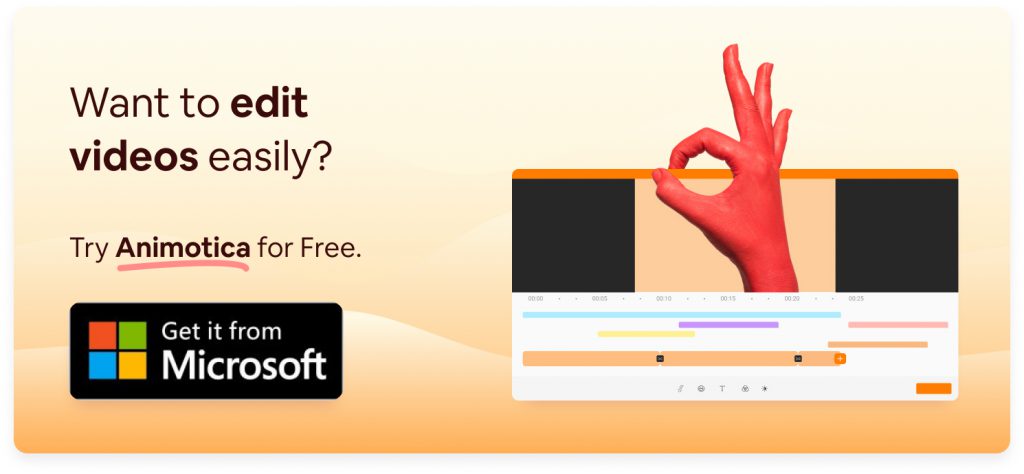
Ready to optimize your LinkedIn videos with ease? Download Animotica from the Microsoft Store now!
The Bottom Line
By now, you should have a solid understanding of the technical specifications, best practices, and strategic insights necessary for creating impactful LinkedIn videos. Adhering to these guidelines will maximize the reach and engagement of your video content.
- Technical Specifications: Ensure correct formats, dimensions, aspect ratios, resolutions, and bitrates for high-quality playback. Be mindful of file size and supported formats.
- Best Practices: Make your videos the ideal length, use captions for accessibility, and select eye-catching thumbnails.
- Types of Videos: Leverage native videos, video ads, and live videos for specific goals.
- Strategic Advice: Tailor content to LinkedIn’s professional audience, focus on storytelling, and post at optimal times.
- Algorithm Optimization: Use hashtags, tag people, and encourage interactions to enhance performance.
Periodically review and analyze your video campaigns, drawing insights from successful case studies. Use visual aids and resources to stay updated with the latest guidelines. Effective LinkedIn video content can significantly boost your marketing strategy and audience connection.
For an easy way to create and edit your LinkedIn videos, consider using Animotica. It’s a user-friendly video editor that provides a range of tools to help you enhance your video content effortlessly.

Additionally, understanding the technical requirements for other platforms can be beneficial. For instance, you can check out this comprehensive guide on YouTube video size to optimize your content across different channels.
Ready to elevate your LinkedIn videos? Start applying these tips and watch your engagement grow!
FAQ
How important are captions and subtitles for LinkedIn videos?
Captions and subtitles in LinkedIn videos are more than just nice-to-haves—they are essential tools for maximizing engagement and accessibility. Here’s why:
- Accessibility: Captions and subtitles make your videos accessible to a broader audience, including those who are deaf or hard of hearing. By adding text to your videos, you’re ensuring that everyone can fully understand and enjoy your content.
- Silent Auto-play: Videos on LinkedIn often auto-play without sound. Captions allow users to follow along without needing to turn the sound on, increasing the likelihood that they’ll engage with your content.
- Global Audience: If your LinkedIn network spans multiple countries and languages, subtitles can help bridge language gaps and make your videos comprehensible to non-native speakers.
- Increased Engagement: Videos with captions are often perceived as more professional and polished. This can lead to higher engagement rates, as viewers are more likely to watch the entire video and interact with it.
In summary, incorporating captions and subtitles can significantly enhance the reach and effectiveness of your LinkedIn videos. Consider them a vital component of your video strategy to ensure you connect with as many people as possible. Check out this comprehensive guide for more information on adding text to videos.
What tips can improve my LinkedIn video thumbnails?
When it comes to enhancing your LinkedIn video thumbnails, paying attention to visual appeal and clarity can make all the difference. Here are some effective tips to help you create thumbnails that attract and engage viewers:
- Use High-Quality Images: Ensure your thumbnail is crisp and clear. Blurry or pixelated images can deter viewers from clicking on your video.
- Ensure Visual Appeal: Your thumbnail should be visually compelling. Use bright colors, bold fonts, and clear images to draw attention.
- Incorporate Branding: Include your logo or brand colors to make your thumbnail instantly recognizable. This reinforces brand awareness and offers a professional touch.
- Text Overlay: Adding a short, descriptive text overlay can give viewers a snapshot of what your video is about. Keep it concise and ensure it’s readable even in smaller sizes.
- Consistency is Key: Maintain a consistent style across all your video thumbnails. This helps in building a cohesive visual identity that your audience can easily identify.
- Highlight Faces: If possible, include human faces in your thumbnails. Thumbnails with faces tend to attract more engagement because of their human element.
- Test Different Designs: Experiment with different thumbnail designs to see which ones perform best. A/B testing can provide insights into what your audience responds to most positively.
By following these tips, you’ll be on your way to creating LinkedIn video thumbnails that not only stand out but also drive more clicks and engagement. Check out our guide on top apps for making eye-catching video thumbnails for additional resources.

